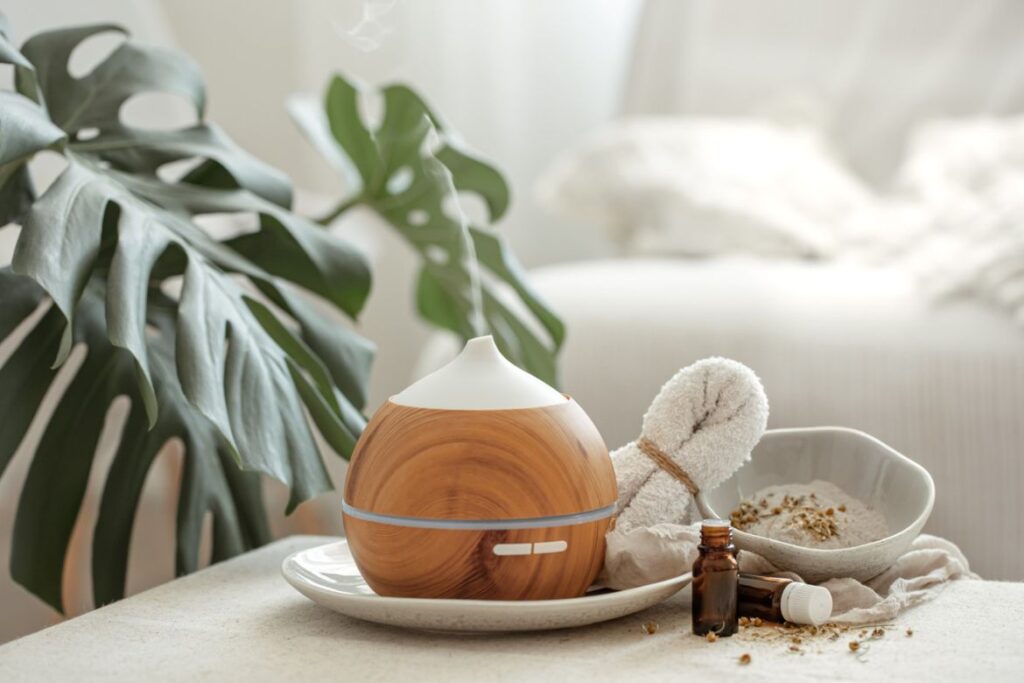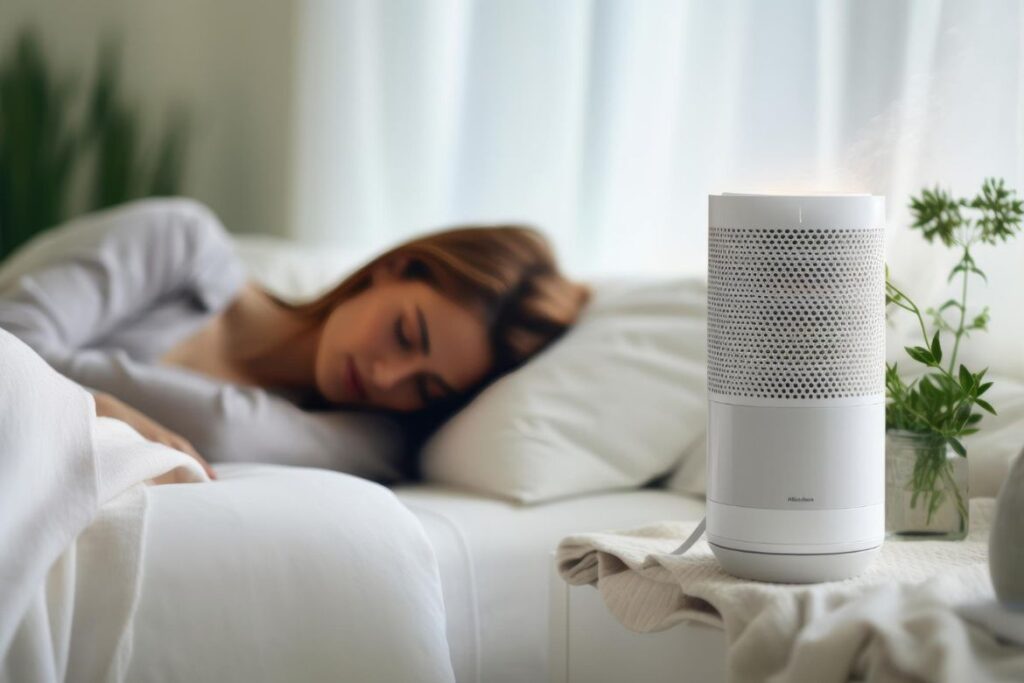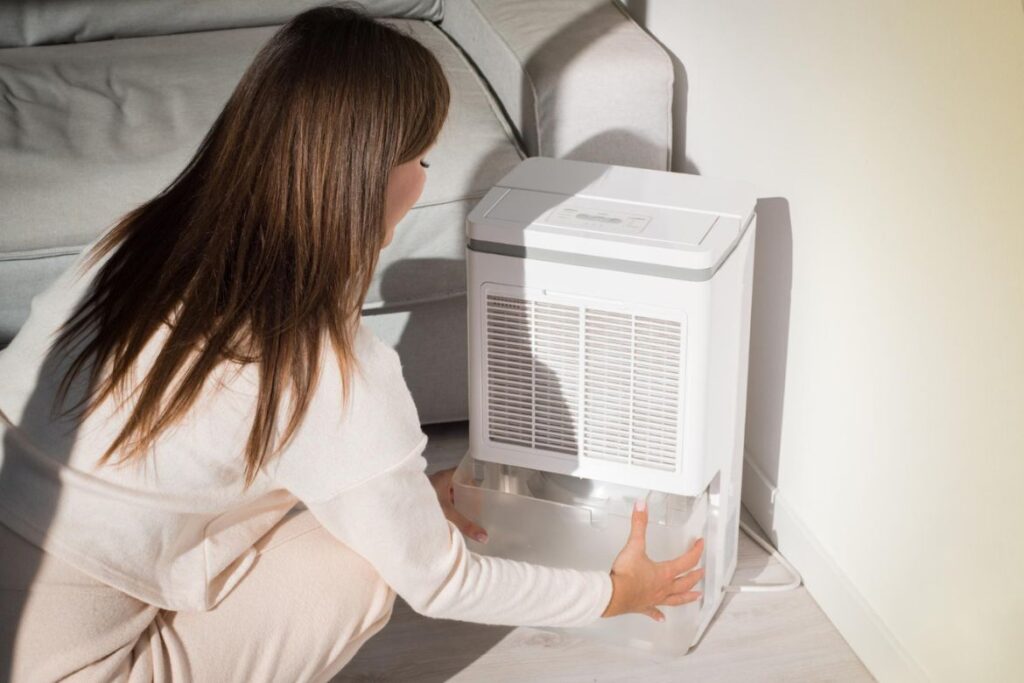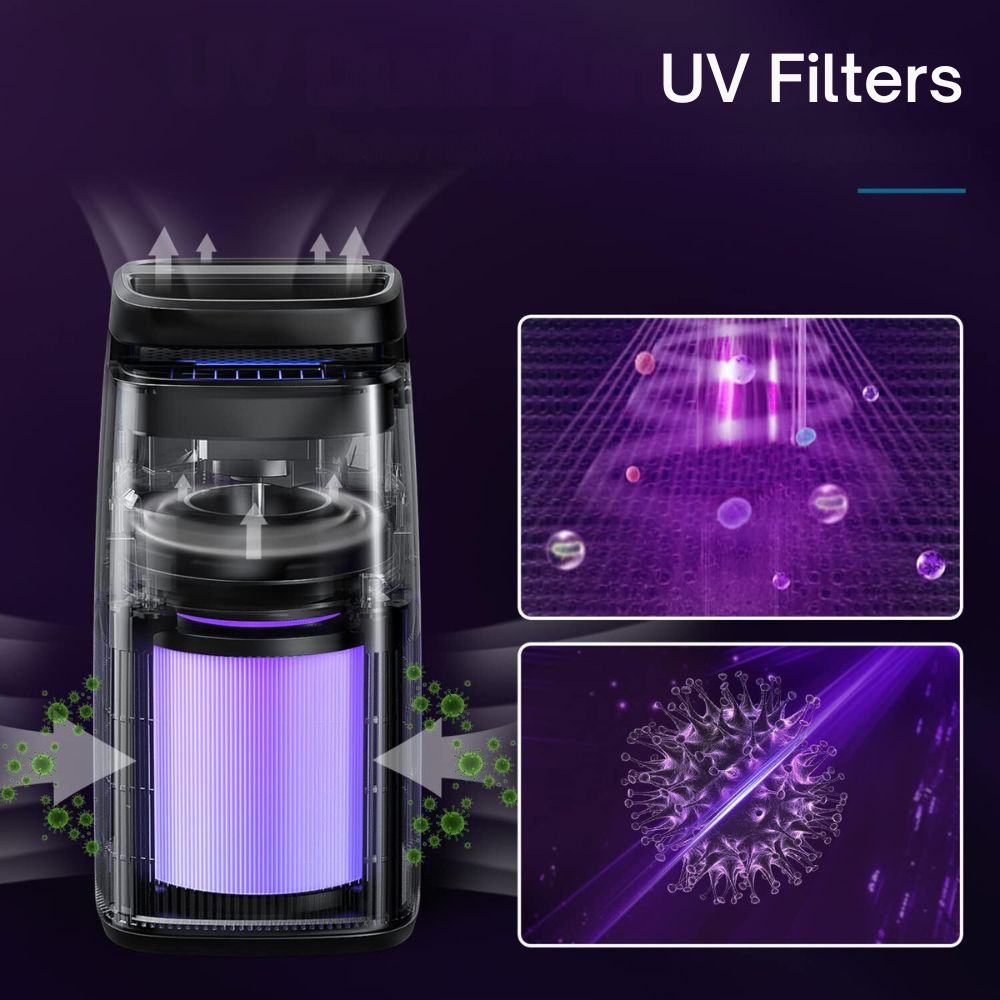In today’s world, where environmental pollutants and allergens pervade our living spaces, indoor air quality has become a significant concern. Air purifiers once considered a luxury, are now a necessity for many households, acting as a shield against various airborne contaminants. The importance of these devices has been magnified in recent years, especially with heightened awareness about airborne viruses and the increasing prevalence of allergies.

This comprehensive guide delves into the efficient usage of air purifiers. Understanding how these devices work, choosing the right type for your needs, and optimizing their placement and maintenance are crucial for reaping maximum benefits. From selecting the best location in your room to regular maintenance routines, this article will provide you with expert tips and insights on using air purifiers effectively.
Whether you’re a first-time buyer or looking to maximize the efficiency of your current device, this guide aims to answer all your questions, ensuring your indoor air remains as clean and healthy as possible.
Understanding Air Purifiers and Their Functionality

Air purifiers have become increasingly popular, especially with rising concerns about indoor air quality. These devices are designed to combat various indoor pollutants and allergens, significantly improving the air quality in our living and working spaces.
Indoor air can be contaminated by numerous sources, such as household cleaners, mold from excess moisture, building materials, and cigarette smoke. This contamination often goes unnoticed but can have a substantial impact on health and well-being. An air purifier works as an electric appliance that removes these pollutants and fine particles from the surrounding air, thus enhancing indoor air quality. It does this by sucking in the contaminated air, passing it through filters to trap the pollutants, and then releasing the purified air back into the environment.
Modern air purifiers are equipped with different types of filters, each designed to target specific contaminants. The most common and effective type is the High-Efficiency Particulate Air (HEPA) filter, which can theoretically remove almost all particles of 0.3 microns size or more.
This includes dust, pollen, mold spores, mildew, pet dander, dust mites, soot, and various airborne pathogens. These filters are particularly effective at filtering out physical particles and are recommended for home use due to their high efficiency.
Another type of filter used in air purifiers is the activated carbon filter. These filters are treated to be highly porous, enabling them to capture odors and gases, including volatile organic compounds (VOCs). VOCs are harmful carcinogens found in various household products and can be particularly detrimental to indoor air quality.
The functionality of air purifiers extends beyond just filtering the air. Many modern units are designed to automatically adjust their speed and voltage, depending on the air quality, making them energy efficient while continuously purifying the air. Understanding the mechanics and capabilities of air purifiers is essential in choosing the right unit for your space and ensuring that you are effectively improving your indoor air quality.
Types of Air Purifiers and Their Mechanisms

Air purifiers have evolved significantly, offering various types to cater to different needs. One of the most recognized and widely recommended for home use is the High-Efficiency Particulate Air (HEPA) purifier. HEPA air purifiers are celebrated for their ability to filter out a high percentage of airborne pollutants, including dust, pollen, mold spores, and other allergens.
They often incorporate features from other types of purifiers to enhance their effectiveness. For instance, some HEPA purifiers include activated carbon, which is effective in absorbing odors and gases, or ionizers and UV filters to further purify the air.
Another type is the ionizer, which uses charged ions to clean the air. Ionizers can be effective but have raised concerns due to ozone production, which can be harmful in high concentrations. Ozone generators, a less common type, are generally not recommended for indoor use due to potential health risks associated with ozone.
UV purifiers use ultraviolet light to destroy pathogens and mold spores. While their effectiveness in a fast-moving air stream can be limited, they can be a valuable addition to a multi-filtration system. Adsorbents like activated carbon are particularly effective against VOCs and odors, making them a great addition to HEPA filters for comprehensive air purification.
When choosing an air purifier, it’s important to consider the specific needs of your space and any particular contaminants you need to target. For general home use, HEPA purifiers are often the best choice due to their broad range of effectiveness. For those with specific concerns about odors or gases, a purifier with an activated carbon filter may be more appropriate.
Renowned brands like Honeywell and Dyson offer a range of air purifiers, including HEPA and multi-filtration systems, which are highly rated for efficiency and reliability.
Selecting the Right Location for Your Air Purifier

The placement of an air purifier in your home is a critical factor in maximizing its effectiveness. Proper location ensures the purifier can efficiently circulate and clean air throughout the space. For optimum performance, place your air purifier in a position where it can freely draw in air from all corners of the room. Avoid obstructing the purifier with large objects, particularly metallic items, as they can impede airflow and reduce efficiency.
In larger rooms or when using an air purifier for multiple rooms, strategic placement becomes even more crucial. It’s advisable to position the purifier near where you spend most of your time, such as near the living area or bedroom, to ensure you’re benefiting from the cleanest air possible. The direction the purifier faces can also influence its effectiveness, so align it to maximize air intake and distribution.
When selecting an air purifier, it’s essential to consider the size of your room and choose a model capable of filtering the volume of air in that space effectively. Brands like Levoit and Coway offer a range of air purifiers suitable for different room sizes, many of which can be found on Amazon.
These models often come with specific recommendations for room size, ensuring you select a unit that’s adequately powerful for your space.
Proper placement and sizing are integral to getting the most out of your air purifier. By considering the layout of your room and the purifier’s capacity, you can significantly enhance its performance, contributing to a healthier, cleaner indoor environment.
The Benefits of Keeping Air Purifiers On Continuously

Keeping air purifiers running continuously is beneficial for maintaining consistent air quality. High-end air purifiers are designed to automatically adjust their speed and voltage, balancing air purification with energy efficiency. This feature ensures that your indoor air remains healthy and reduces electricity costs.
Operating air purifiers 24/7 is particularly effective as they use low voltage to circulate air, making continuous use economically viable. After exposure to outdoor pollutants and allergens, having an air purifier constantly running ensures that you’re breathing cleaner air as soon as you enter your home.
This continuous operation is crucial in homes with pets, smokers, or in areas with high outdoor pollution, as it helps in constantly filtering out bad smells, pet pollutants, and other contaminants.
When choosing an air purifier for continuous use, it’s important to select a model that is designed for such operation. Brands like Blueair and Alen offer air purifiers with smart sensors and automatic mode, which adjust the purifying power according to the air quality, making them ideal for continuous use. These models can be found on platforms like Amazon, where you can choose based on room size and specific features.
Continuous operation of air purifiers ensures a consistently clean and healthy indoor environment, making it a wise choice for those particularly concerned about indoor air quality.
Maintenance: The Key to Air Purifier Efficiency

Regular maintenance is vital for the efficiency and longevity of your air purifier. Air purifiers use different types of filters, such as HEPA and carbon filters, which play a critical role in purifying the air. HEPA filters, renowned for their efficiency, require less frequent replacement, typically on an annual basis. On the other hand, carbon filters, effective in trapping odors and gases, also need regular replacement or maintenance.
Some air purifiers come with washable filters, which are cost-effective but require more frequent cleaning, ideally once a week. Failing to clean or replace these filters regularly can lead to reduced efficiency and even damage to the purifier. As the filters perform most of the air purification tasks, their maintenance is crucial to the overall functionality of the device.
For specific maintenance guidelines, it’s advisable to refer to the manufacturer’s instructions. Regular checks and adherence to maintenance schedules ensure that your air purifier operates at peak efficiency, providing clean and healthy air consistently.
Maximizing Air Purification: Keeping Doors and Windows Closed
For air purifiers to function effectively, it’s important to keep windows and doors closed during operation. This practice ensures the purified air stays within the room and prevents the influx of unfiltered outdoor air. Air purifiers are designed to circulate and clean the air of a specific area. When doors and windows are left open, the device has to work harder to purify the constantly incoming air, which can reduce its efficiency and effectiveness.
By keeping the environment enclosed, you allow the air purifier to work optimally, maintaining a clean and healthy indoor atmosphere. This simple yet crucial step can significantly enhance the performance of your air purifier, ensuring you reap the full benefits of the device.
Advanced Features in Modern Air Purifiers


Photo: amazon.com
Modern air purifiers come equipped with advanced features that enhance their air-cleaning capabilities. Activated carbon filters are one such feature, capturing odors and gases, including volatile organic compounds (VOCs) like formaldehyde and benzene. These filters are particularly beneficial for homes using various household products that emit VOCs.
Another advanced feature found in some air purifiers is the ultraviolet (UV) filter. These filters use UV light to destroy mold spores and other airborne contaminants, including certain pathogens. However, the effectiveness of UV filters can vary, as extended exposure to UV light is required to kill contaminants.
When considering an air purifier with these advanced features, it’s important to look for models that have a combination of these technologies to ensure comprehensive air purification. Products like the GermGuardian AC4825E incorporate both HEPA and UV-C light technology, offering a well-rounded approach to air purification.
Remember, most filters in air purifiers, including these advanced ones, need to be replaced periodically for effective operation, typically every three to six months. Choosing an air purifier with these advanced features can significantly improve indoor air quality, especially in environments with specific air purification needs.
The journey to understanding and effectively using air purifiers is crucial for maintaining healthy indoor air quality. The right air purifier can significantly enhance the air quality in your home, contributing to a healthier living environment. By considering the types of filters, maintenance needs, and the unit’s features, you can ensure that your air purifier serves you efficiently and effectively.
Now that you’re equipped with comprehensive knowledge about air purifiers, we encourage you to take the next step. Assess your indoor air quality needs, explore various air purifier models, and find the perfect fit for your home. If you have any experiences or tips regarding air purifiers, we invite you to share them in the comments below.
Frequently Asked Questions
1. Do Air Purifiers Remove Odors?
Yes, air purifiers with activated carbon filters are very effective at removing odors, including those from smoke, pets, food, and garbage.
2. Can Air Purifiers Cure Asthma or Allergies?
No, air purifiers can prevent asthma symptoms and allergies by filtering out airborne allergens like pollen, dust, and animal dander, but they do not cure these conditions.
3. What Is the Best Air Purifier for Someone With Asthma?
The best air purifier for someone with asthma typically includes both a HEPA filter and an activated carbon filter, as this combination can remove particles and gaseous pollutants that trigger asthma.
4. Are There Side Effects to Using an Air Purifier?
Generally, there are no side effects. However, some purifiers that use electrostatic precipitators and ionizers may emit small levels of ozone, so it’s important to check product specifications before buying.
5. How Much Does It Cost to Operate an Air Purifier?
The cost depends on the electricity use and filter replacement frequency. High-quality HEPA filters may last 3-5 years, while cheaper filters might need more frequent replacements.
6. How Do I Know if My Air Purifier Is Working?
Signs like reduced allergy symptoms can indicate effectiveness. Also, checking the pre-filter for dust or dirt after cleaning can help. The filter’s lifespan varies based on usage and location.
7. Will an Air Purifier Protect My Entire House?
It depends on the purifier’s capacity. Check the packaging for the maximum area coverage and compare it to your home’s square footage.
8. Can I Open Windows While the Air Purifier Is Running?
Yes, but keeping doors and windows closed helps maximize the air purifier’s effectiveness.
9. Where Should I Place My Air Purifier?
Place it in a room where you spend a lot of time, such as a bedroom, and ensure there’s no obstruction to its airflow.
10. How Often Should I Run My Air Purifier?
Run the purifier at regular intervals, especially in larger spaces. For smaller rooms, less time is needed for cleaning.
.
